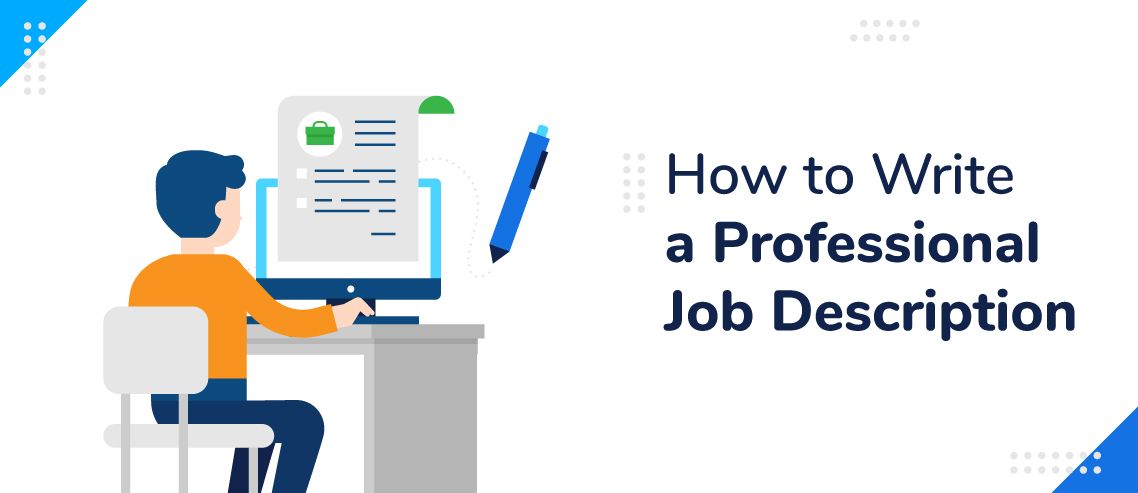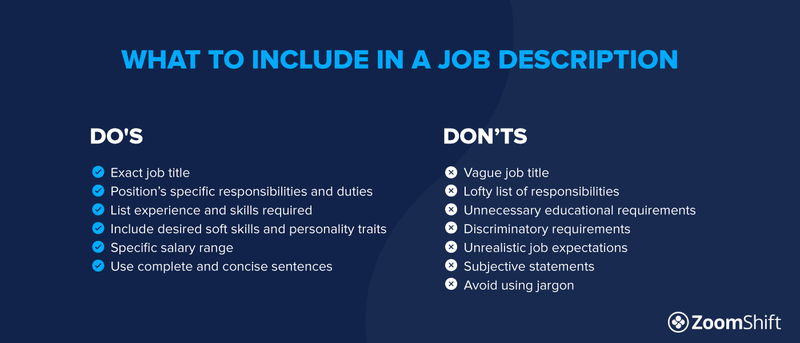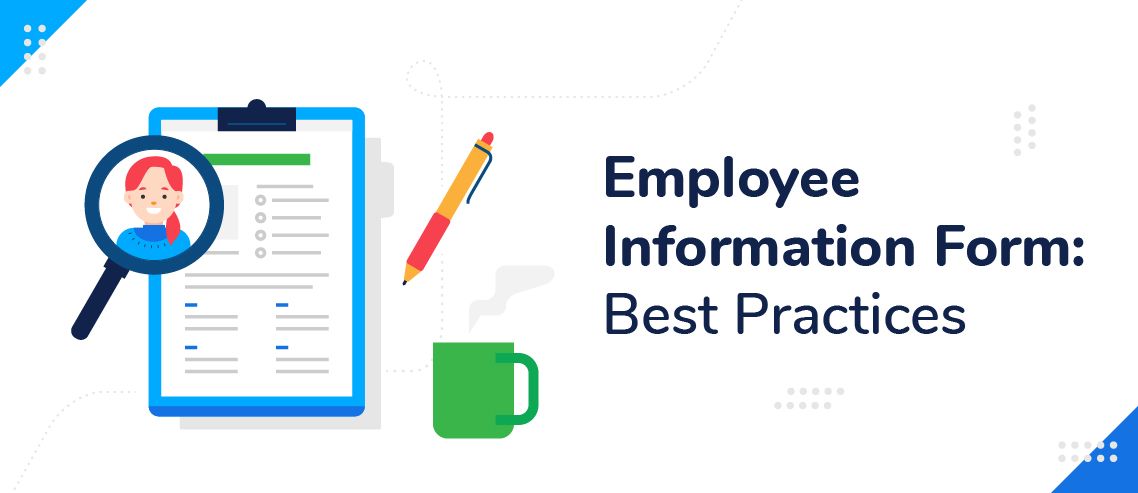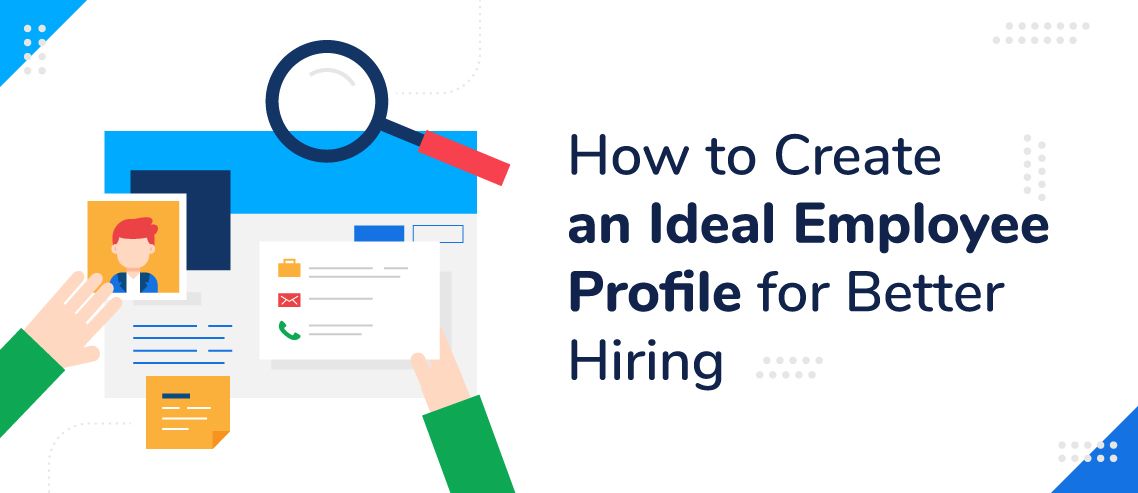How to Write a Professional Job Description (with Free Template)

Job descriptions get a bad rep these days.
They feel unnecessarily long, and they’re often full of jargon and buzzwords few of us understand. To put it plainly, they feel like a formality we could all do without.
There’s some truth to those feelings, but ultimately it’s a matter of perspective.
Job descriptions can, and should, feel like your North Star. It’s a single source of truth in a world full of grey areas and ambiguity that tells you exactly what’s important and what’s not.
As anyone with real work experience will tell you, the day-to-day is full of distractions and conflicting priorities. It’s often challenging to discern what’s essential and what’s not. Or, more importantly, what’s your responsibility and what’s extra.
As you embark on a journey to write your next job description, consider the long-term implications of what you write. Who will read it? How might it change or evolve over the years?
Let’s jump into a quick definition before we get into the meat of writing a job description:
What Is a Job Description?
A job description is a medium by which hiring managers communicate their needs to both external and internal candidates. For the employer, the job description lays out essential information about the role, so gauging the candidate’s experience, skills, and readiness is easier to accomplish.
For the employee, the job description describes the responsibilities, tasks, and related duties of a position. It will often include additional information such as education, qualifications, and skills required for the role. You can also expect important details like working conditions, compensation offering, physical demands, and tools or equipment required.

How to Write a Job Description
Thankfully, there’s no “right” or “wrong” way to write a job description. It can be as short or as long as you like. As descriptive or vague as you want. It can also have hidden instructions to gauge people’s attention to detail.
It’s whatever you want it to be.
Here are some ideas to get you started:
1. Jot Down the Position’s Responsibilities and Duties
Some critical questions to ask yourself as you write this are:
- What does their day-to-day look like?
- What tasks do you expect they own and complete in a timely manner?
- Who else do they interact with day-to-day and how are they accountable to those people?
- If they were to provide reports or updates to someone what metrics are included?
Be as specific as possible here to make their day-to-day and your performance evaluations easier.
2. List Experience and Skills Required
Now that you’ve specified responsibilities and daily activities it is time to create your wishlist of skills, experience, and education.
Who is your ideal candidate? I mean perfect in every way.
Take another stab at your wishlist and order it from most important to least important. Finally, add in what’s required and what’s optional.
3. Include Desired Soft Skills and Personality Traits
Education and experience are great, but will they fit your culture? And do they have the soft skills to pull off their job function? Here are a few questions to consider when dreaming up the right candidate:
- Do you need a self-starter or someone who can simply follow directions?
- Will they work independently or as part of a team?
- How flexible is the role? Do they follow checklists or is a lot of it creativity?
- Describe the current team’s personality or the company’s culture
Keep going! Jot down what you want and what you don’t want. It’ll all come in handy later.
4. Determine Compensation
Now dig deep and consider how much you’d have to pay that ideal person and how likely it is to find that person. Decide if it’s an entry-level position or a higher tier that requires more experience and a higher starting salary.
A fair salary is a must, but how else can you entice a candidate to apply?
Consider adding monetary and non-monetary benefits besides salary. Sometimes people will take a lower paying role if the health, dental, and retirement benefits are excellent. Or if they know there’s a lot of opportunity for growth at the company.
Determine ahead of time if there’s a salary cap or a merit increase schedule and what you’re comfortable paying year over year.
5. Write the Job Description
You now have everything you need to write your job description.
Start by writing the job title and a brief introduction to the company. Explain what the company does, how many employees you have, and your overall mission.
Next up, add position details, including job requirements and day-to-day responsibilities. Ensure that they understand both the opportunities and the challenges of the role. The more transparent the better so nobody wastes their time.
Add in miscellaneous details like work hours, location, compensation, and start details.
Finally, list out the attributes that the ideal candidate would possess, ranging from education to prior work experience and soft skills. Ensure that they know what’s required and what’s optional.
What Not to Include in a Job Description
Here’s what not to include in a job description:
- A list of skills you don’t need – This will turn off candidates who are underqualified and unnecessarily shrink the candidate pool.
- Discriminatory language – Avoid using any language that may exclude certain groups of people based on their race, gender, or age. Keep the job description inclusive and welcoming to all qualified candidates.
- Unrealistic expectations – Be realistic about the skills and experience required for the role and avoid setting impossible expectations. This will only discourage potential candidates and lead to a longer hiring process.
- Using paragraphs to describe required skills and responsibilities – Use bullet points to make the information easier to read and digest. Paragraphs can often be overwhelming, especially if the job description is lengthy.
- Excessive use of buzzwords – While you may want to showcase your company’s culture and values, try not to overuse them. This can come across as disingenuous and may turn off potential candidates. Keep the language clear and concise.
- Gender-biased language – Avoid using masculine or feminine pronouns when describing the ideal candidate. Instead, use neutral language to ensure inclusivity.
- Cliches and overused phrases – “Marketing Maverick”, “Data Ninja”, or “Rockstar Developer” are just a few examples of cliches that have been overused in job descriptions. Be creative and authentic in your language to stand out from other job postings.
Job Description Template to Use
The last piece of advice on writing job descriptions is don’t start from scratch. There are countless job descriptions out there just like the one you’re posting. Use them as inspiration and adapt them to your needs. Here’s a basic job description template to get you started:
Job Title: [Insert job title here]
Location: [City, state, if applicable, or note if remote]
Department: [Department name]
Job Type: [Full-time/part-time/contract/freelance]
Salary Range: [If applicable]
Job Overview:
Provide a brief overview of the job’s primary purpose and its role within the organization.
About Us:
Write a brief description of your organization, such as what products and services you offer and your mission statement.
Key Responsibilities:
- [Responsibility 1]: Describe in detail what the job will entail.
- [Responsibility 2]: Be specific about the daily tasks.
- [Responsibility 3]: Include expectations regarding collaboration with other departments, if applicable.
- [Add more responsibilities as necessary]
Required Qualifications:
- Education: [Specify the required education level or field of study, if applicable]
- Experience: [Specify years/type of experience needed]
- Skills: [List necessary skills like communication, organizational, and technical skills]
- [Add more qualifications as necessary]
Preferred Qualifications:
- Certifications: [If any specific certifications are preferred, list them here]
- Technical Skills: [List any specialized technical skills that would be beneficial]
- Experience: [Any additional experience that would be advantageous]
- [Add more as necessary]
Benefits:
- [Briefly list available benefits like health insurance, retirement plans, etc.]
- [Include any unique company perks]
Application Process:
Provide clear instructions on how to apply for the job. Include contact information or a link to the application portal.
Disclaimer:
Add a disclaimer noting that the above statements are intended to describe the general nature and level of work being performed by people assigned to this job. They are not to be construed as an exhaustive list of all responsibilities, duties, and skills required.
Job Description Essentials
As we wrap up, we’ll leave you with some best practices for writing an effective job description:
- Transparency is key – Glassdoor and job review sites are widely used so it’s better to disclose any and all rough aspects of the job or the company upfront.
- Limit industry jargon – It will only discourage candidates from applying.
- Help them do research – Link your website, social media pages, and relevant press releases so they can easily do more research on your company and its values.
- Talk about your customers – Give them industry insights so they have a better understanding of what they’re signing up for.
Once hiring is complete consider using ZoomShift for your employee scheduling needs. Check out this quick video to see how you can level up your scheduling.
Job Description FAQs
How Long Should a Job Description Be?
A job description should be concise and to the point, typically no longer than one page. Avoid using lengthy paragraphs and instead use bullet points to make the information easier to read.
Can I Use a Job Description Template for Every Job Posting?
Yes, you can use a template for just about any job description out there. Just tailor each job description to fit the specific requirements of the job. This ensures that the job description accurately reflects the needs and expectations of the position, and attracts qualified candidates.
Should I Mention a Disclaimer in My Job Description?
Yes, it is important to include a disclaimer stating that the job duties and responsibilities outlined are not exhaustive and may be subject to change. This protects both the company and potential candidates from any misunderstanding about the role.
Can I Include a Salary Range in My Job Description?
Yes, you can include a salary range if applicable. This can help attract candidates who are looking for a specific salary range and save time in the hiring process by weeding out those who may not be interested.
How Often Should I Update Job Descriptions?
Job descriptions should be reviewed and updated annually, or whenever a significant change occurs in the duties, responsibilities, or qualifications of the position.
JD enjoys teaching people how to use ZoomShift to save time spent on scheduling. He’s curious, likes learning new things everyday and playing the guitar (although it’s a work in progress).



